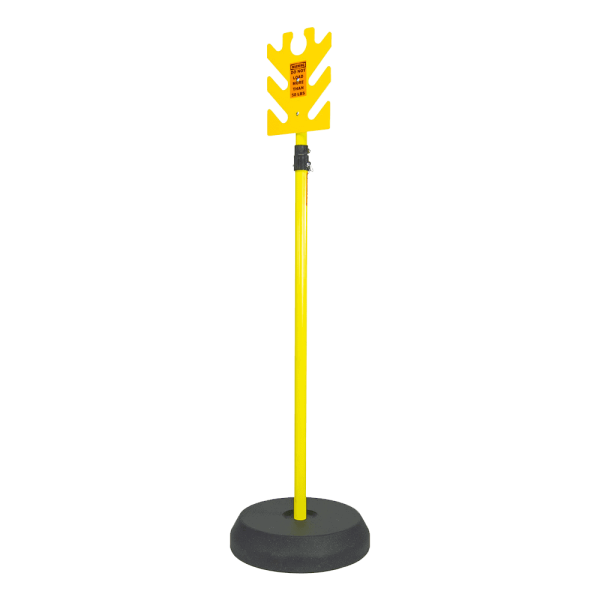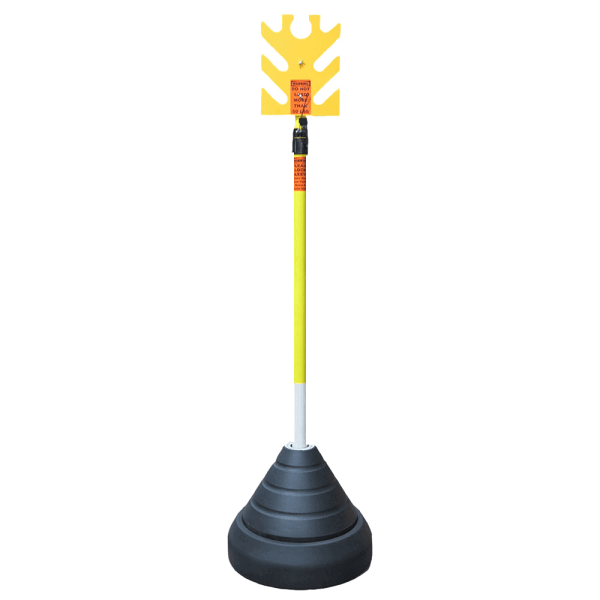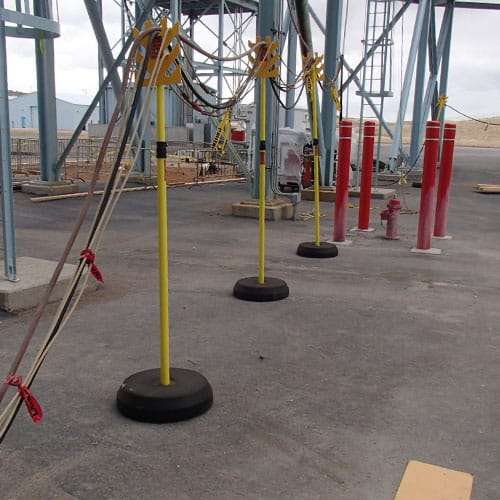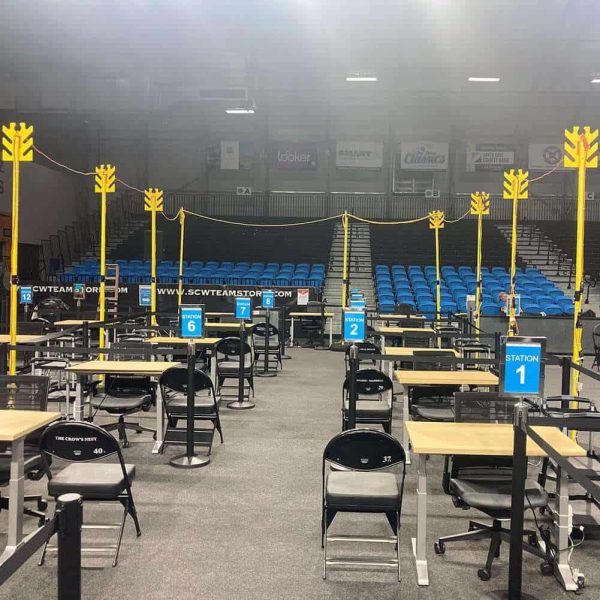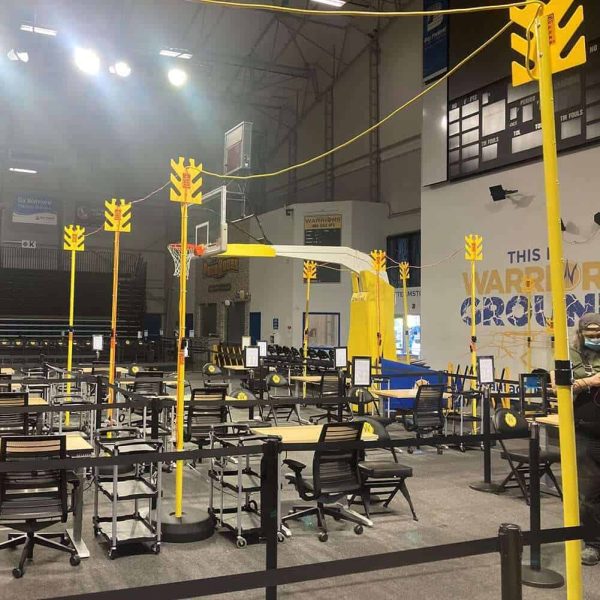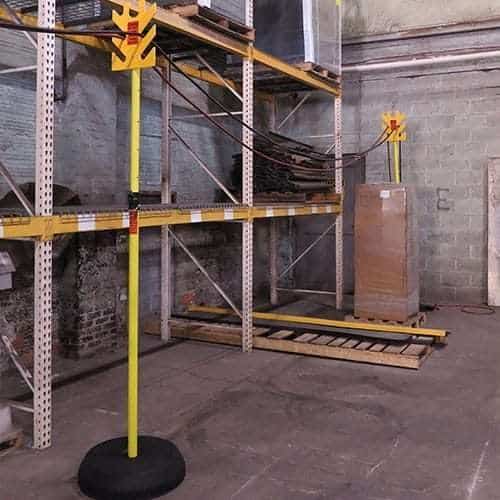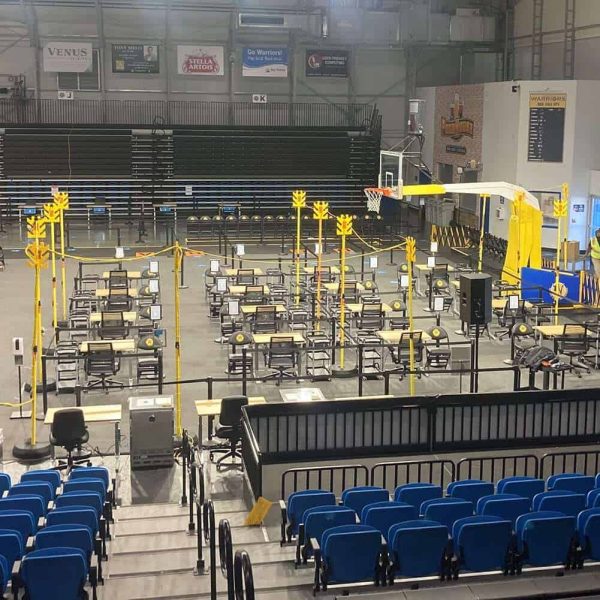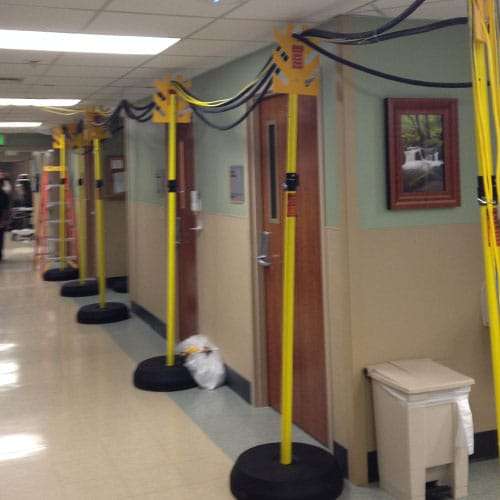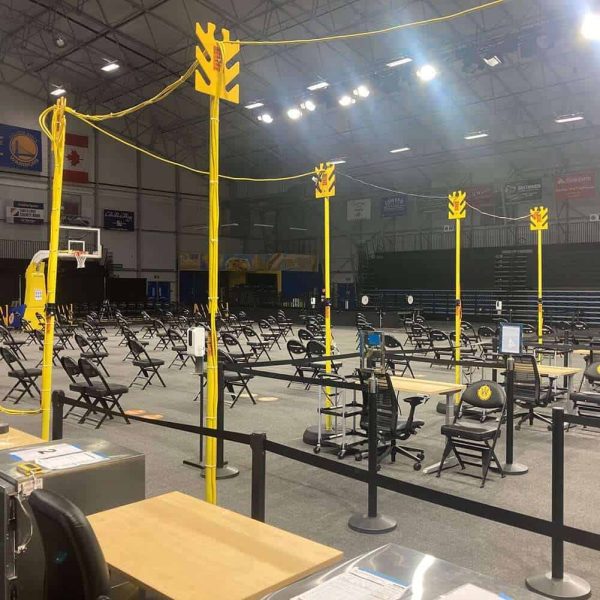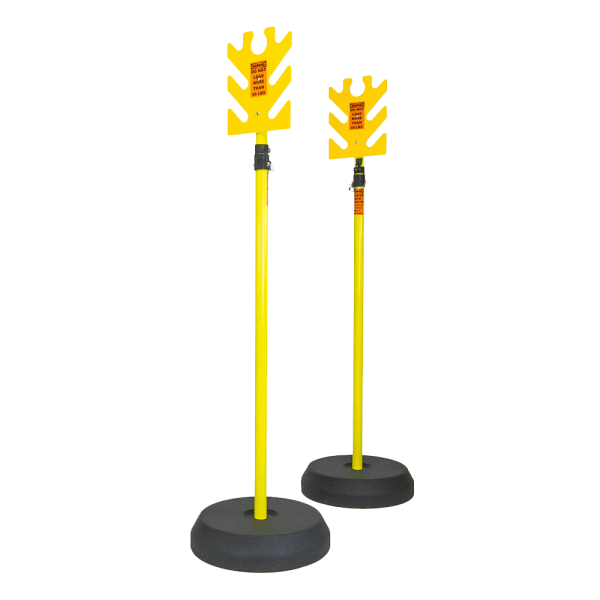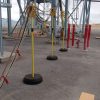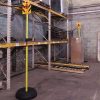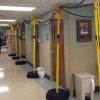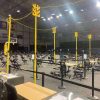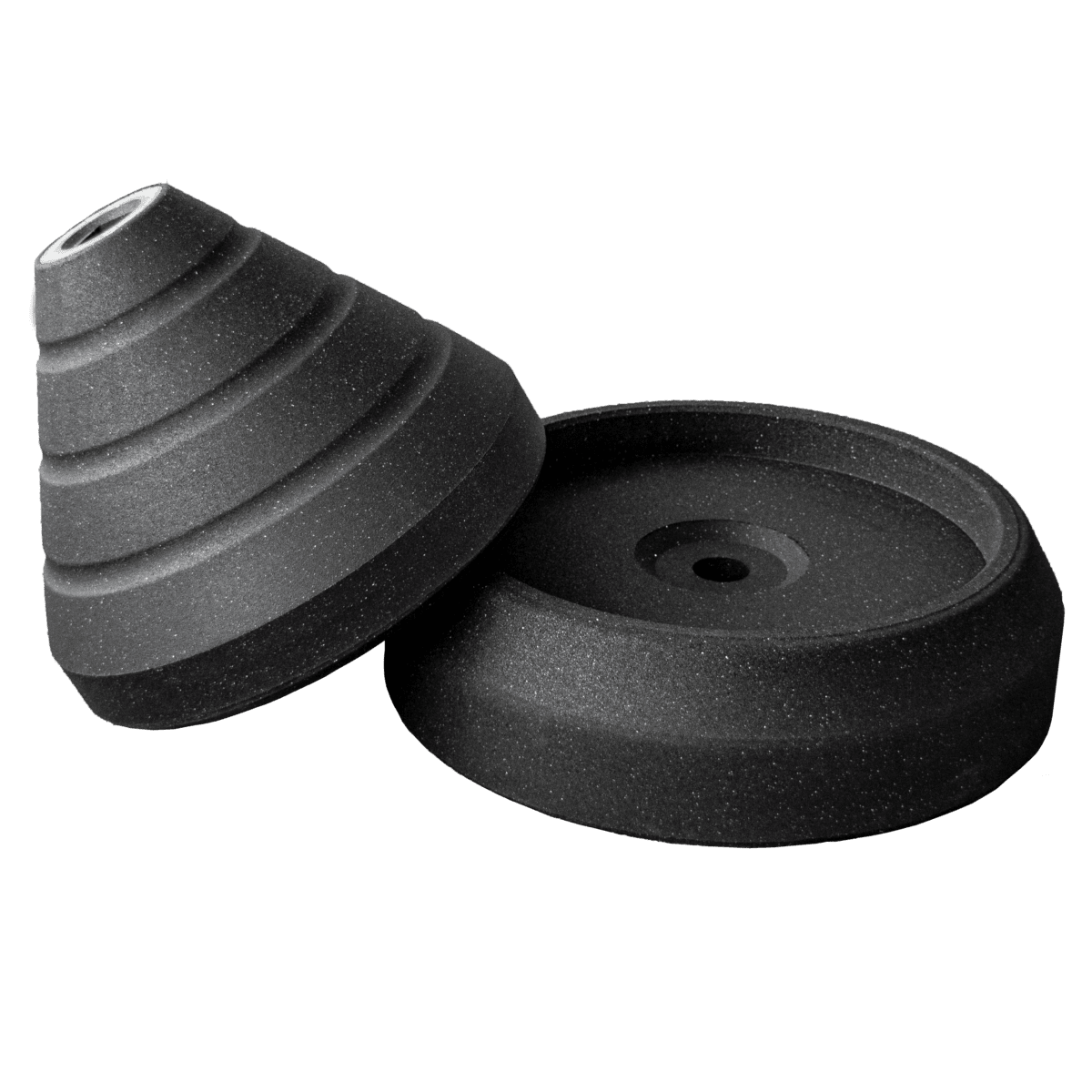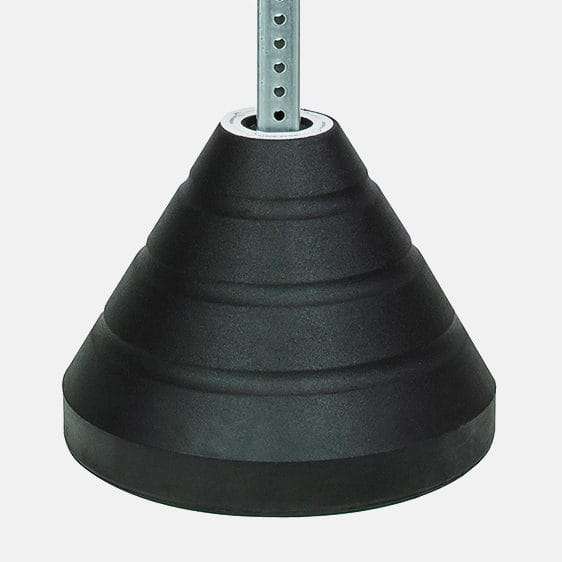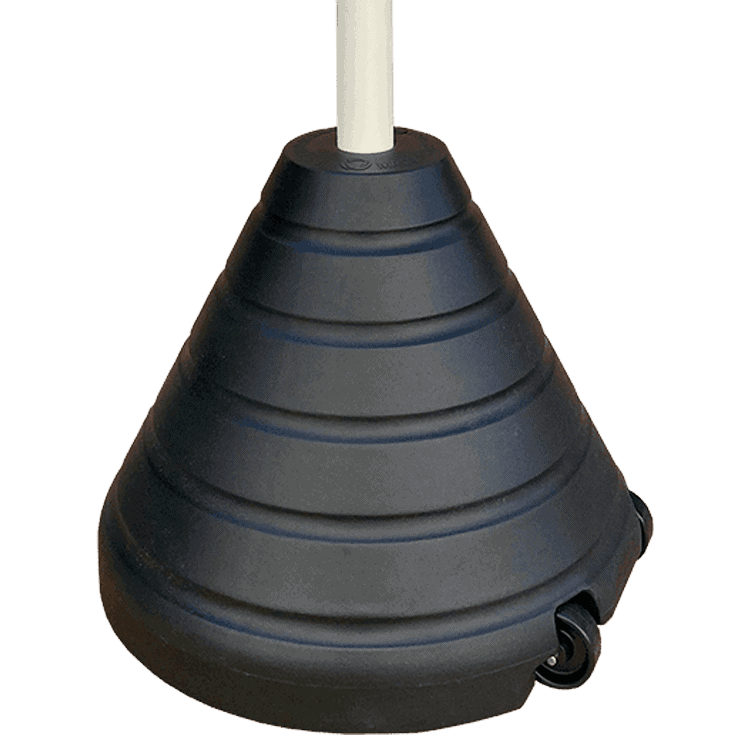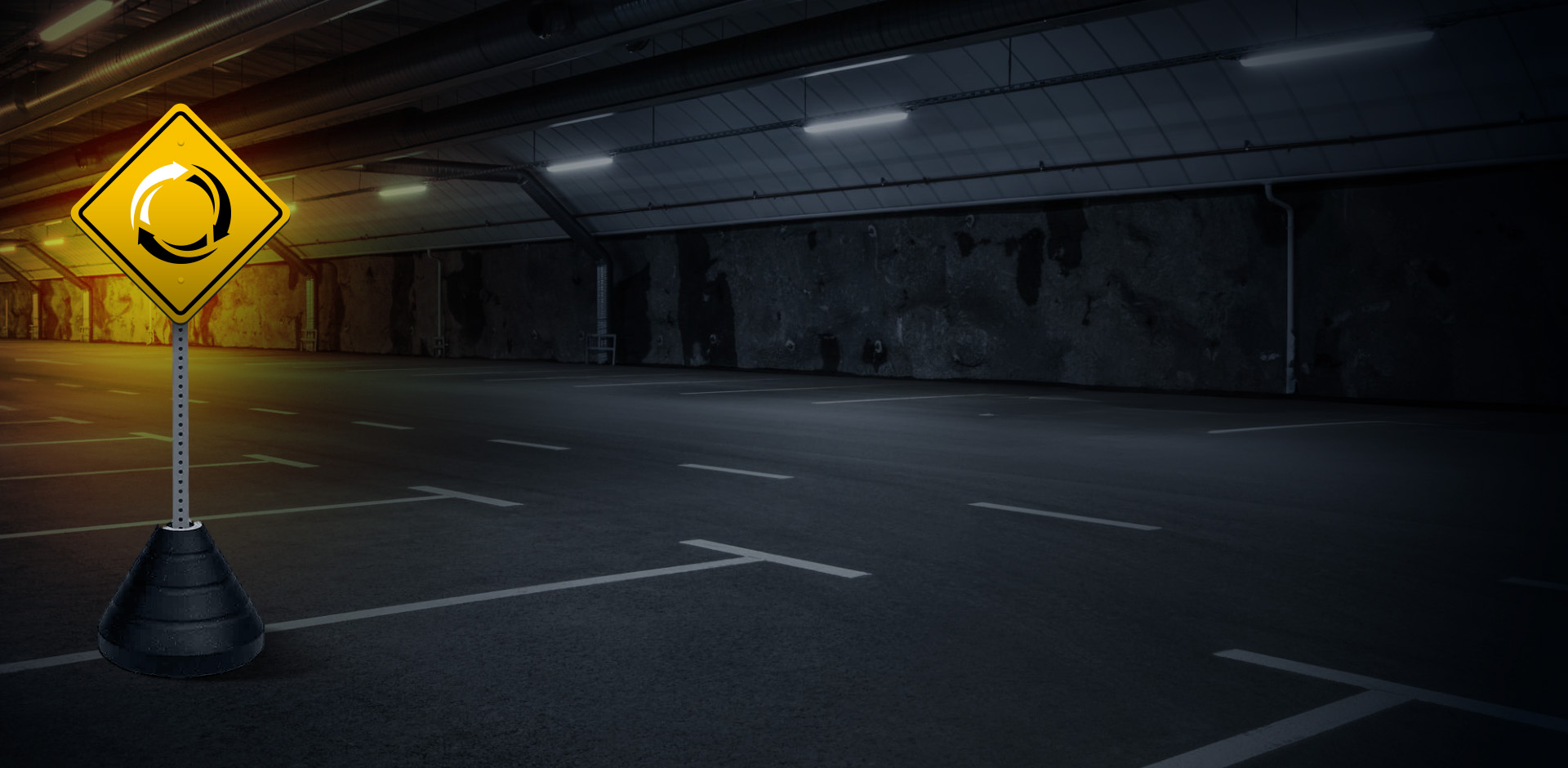- Construction
- Industrial
Portable Electric Cable Support Tower
Product Description
Our RubberForm Portable Electric Cable Support Towers (PECSTs or Cord Trees), safely keep electric cables off the ground and away from human contact.
Traditional wooden cord trees are often built haphazardly, are difficult to move, and most terrifyingly are conductive when wet or when they tip over! Our PECSTs Cord Trees are non-conductive, easy to install, and just as easy to relocate. They’re made of 100% American recycled rubber that won’t crack, crumble, or corrode, no matter the heat, cold, rain, ice or snow you throw at them and the safety yellow poles are all non-conductive FRP – Fiberglass Reinforced Poles with a safety yellow cable antler.
Keep your workers safe and your company compliant with NEC code requirements and OSHA regulations.
Specifications:
- 75 lbs each (Heavy Duty – 150 lbs)
- Telescoping Pole: 2.080”D x 120”H (up to 10-foot height)
- Supports electric cables up to 100 lbs
- Safety yellow nonconductive FRP – Fiberglas Reinforced Poles with safety locking clip and added safety drilled holes for a safety D ring post stop
- Plastic composite safety yellow cable antler
- Safety D-ring where base and pole meet
- Enhances safety and minimizes liability
- Made in the USA with 100% American recycled tire rubber
Product Description
We can’t believe jerry-rigged wooden or conductive metal cable trees were used for so long to keep dangerous electric cables elevated away from human contact. Those cord trees are made with conductive metal and wood (which conducts electricity when wet). That defeats the whole purpose of a cord or cable tower tree.
We carefully innovated our Portable Electric Cable Support Tower to solve this problem and keep workers safe. NEC codes and OSHA regulations require all electric cables, cords, and hoses to be elevated away from possible human contact on a job site, preventing electric shock or tripping hazards. Extension cords in particular are a concern. They also cannot be laid directly on the ground, must be inspected before every use for damage, need to be properly grounded and rated for the intended load, and must be only a temporary power solution. Your company could be subject to substantial fines and lawsuits for not complying with these regulations, ranging from $16,131 to $161,131 per violation, depending on the severity and whether it’s a repeat violation (See OSHA regulations 29 CFR 1910.334(c)(3) and 29 CFR 1926.405(j)(1)(v)).
Our 100% American recycled rubber PECST is a one-of-a-kind innovated alternative to building your own wooden cable trees. You won’t find it anywhere else. Our PECSTs are so easy to install your grandparents could do it (though we don’t recommend that), and are just as easy to remove and relocate. They also won’t chip, warp, or spall in either the searing summer sun or the frigid cold of North American winters. They’ll withstand wind, rain, ice, or snow, and last for decades, reused at jobsite after jobsite.
Keep your workers safe because you can. It’s the right thing to do.
Models
RF – PCST73
- Portable Electric Cable Support Tower
- Base: 23”D x 6”H – 75 lbs
- Telescoping Pole: 2.080”D x 120”H
- Safety yellow cable antlers
- Safety lock clip on Telescoping FRP Pole
RF-PCSTHD150
- Heavy Duty Portable Electric Cable Support Tower
- Telescoping Post: 2.080”D x 120”H
- 2 Bases included – 150 lbs:
- Conical Shaped Base: 18”D x 14”H
- Bottom Base: 23”D x 6”
- 4 – Rugged structural screws included
- Safety yellow cable antlers
- Safety lock clip on Telescoping FRP Pole
Key Features
- OSHA compliant and meets NEC Code
- Safety yellow FRP non-conductive pole with safety locking collar with D-Ring and safety yellow cable antler
- Easy to deploy, install, and move to different locations
- Heavy duty units available for extra support
- Telescoping pole ability
- Safety labels on telescoping FRP pole and cable antler
- Made in the USA with 100% American recycled rubber and components
